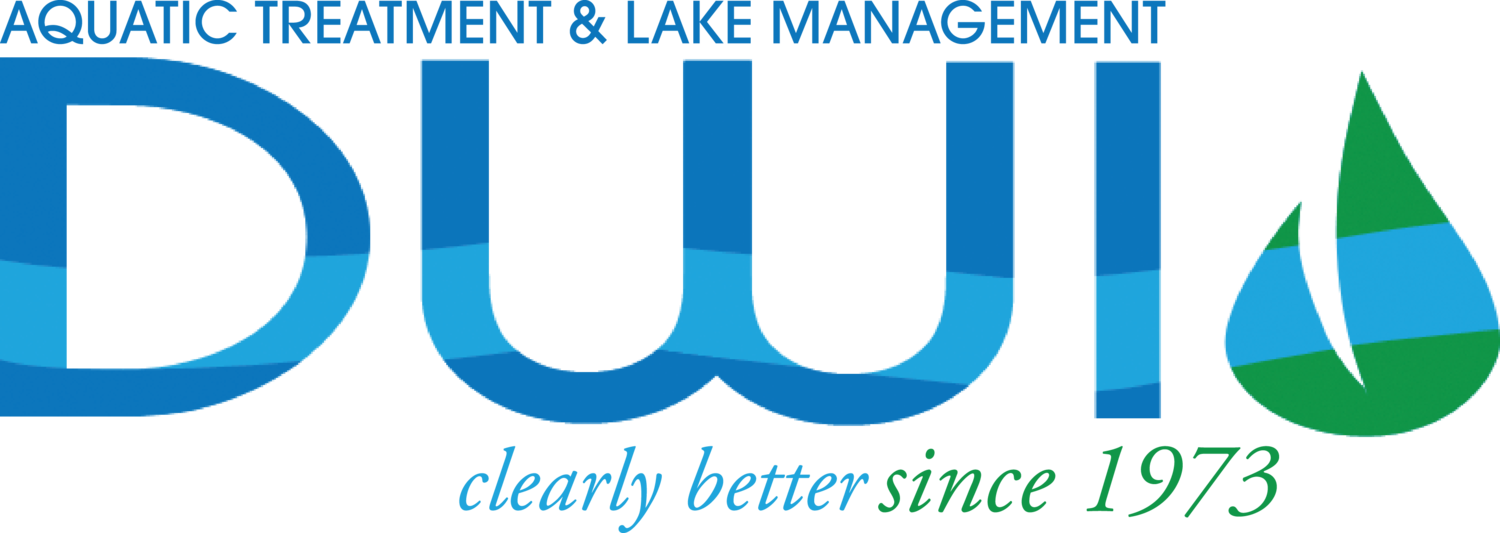By Patrick Simmsgeiger, Founder of DWI
Your dreams have come true. . . the property is beautifully landscaped with running streams, cascading ponds, and water features. Take a moment to enjoy the beauty, the simplicity. Everything has been planned out carefully. Everything is in balance.
To the casual observer, it may seem that water features maintain themselves. But many don’t realize that streams and ponds are living, growing ecosystems that if left unchecked, can get out of whack. Then you’ve got real problems.
Some basic biology of aquatic ecosystems is needed to understand the underlying forces of lakes, ponds, and streams. They are not merely large swimming pools where you can get by with just skimming the surface. If you know the root cause of the problem, workable solutions fall into place.
Green plants and algae use photosynthesis to convert nutrients into usable materials so they may grow, flower, and reproduce. Energy from sunlight drives this process, using elements like nitrogen, carbon dioxide, phosphate, and iron, and like magic, creates new plant growth and oxygen.
All ecosystems operate best when there’s a balance between the elements that go into the system, and the products it releases. So you see there’s much more to water features than clearing away leaves. Diversified Waterscapes is a group of dedicated professionals who deal with water features daily. They can spot potential problems quickly and provide real solutions.
Some problems common to ponds and streams are listed here.
pH is a measure of how “acidic” or how “basic” the water may be and is ranked on a scale of 1 to 14 with 7 being neutral (balanced). Low numbers represent acids while high numbers indicate good alkaline or salt solutions. Evaporation, field run-off, salts, and minerals all affect the pH. Water circulation, aeration, and addition of chemical can restore a pond or stream to its proper pH quickly.
Foam is particularly unappealing, caused by soaps, cleaners, and dead organic matter such as plants or animals. When correctly applied, de-foamers and other chemical can solve the problem almost overnight.
Natural pesticides are good at knocking-down annoying pests, but over spraying may cause fouling of the water system. Stronger pesticides eliminate the bugs very quickly, however run off can threaten fish and wildlife. Ultra fine oil, insecticidal soaps and carnivorous snails may be good alternatives.
Artificial dyes can enhance water features to give you the pristine blue-green color that’s so inviting and peaceful. Too much can interfere with photosynthesis, which in turn, may lead to plant die-off, loss of fish, and wildlife. Proper water circulation, filtration, and aeration can keep these problems in check.
Algae is a good thing in small amounts. When lots of additional nutrients are available, algae can go crazy with rapid growth called “blooms”. This can cause the water to look cloudy and dirty (turbid) and smell like rotting garbage. It slows down photosynthesis and can increase ugly foam mats to appear. Left untreated, bigger problems start to appear, like plant, fish, and wildlife die-off.
Know your water features and know your limitations. Know when to call a professional before the problem becomes overwhelming. If diagnosed early on, treatments can produce visible changes almost overnight, saving you time and money. At Diversified Waterscapes, we can solve your most difficult water feature problems. We can restore the delicate balance needed for healthy ponds and streams. We can help you restore your dreams.



